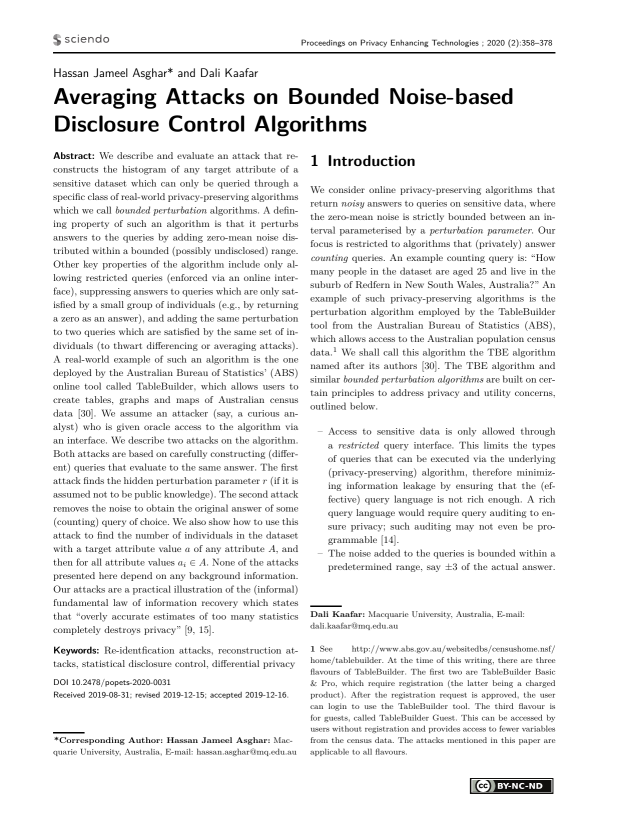Averaging Attacks on Bounded Noise-based Disclosure Control Algorithms
Authors: Hassan Jameel Asghar (Macquarie University, Australia), Dali Kaafar (Macquarie University, Australia)
Volume: 2020
Issue: 2
Pages: 358–378
DOI: https://doi.org/10.2478/popets-2020-0031
Abstract: We describe and evaluate an attack that reconstructs the histogram of any target attribute of a sensitive dataset which can only be queried through a specific class of real-world privacy-preserving algorithms which we call bounded perturbation algorithms. A defining property of such an algorithm is that it perturbs answers to the queries by adding zero-mean noise distributed within a bounded (possibly undisclosed) range. Other key properties of the algorithm include only allowing restricted queries (enforced via an online interface), suppressing answers to queries which are only satisfied by a small group of individuals (e.g., by returning a zero as an answer), and adding the same perturbation to two queries which are satisfied by the same set of individuals (to thwart differencing or averaging attacks). A real-world example of such an algorithm is the one deployed by the Australian Bureau of Statistics’ (ABS) online tool called TableBuilder, which allows users to create tables, graphs and maps of Australian census data [30]. We assume an attacker (say, a curious analyst) who is given oracle access to the algorithm via an interface. We describe two attacks on the algorithm. Both attacks are based on carefully constructing (different) queries that evaluate to the same answer. The first attack finds the hidden perturbation parameter r (if it is assumed not to be public knowledge). The second attack removes the noise to obtain the original answer of some (counting) query of choice. We also show how to use this attack to find the number of individuals in the dataset with a target attribute value a of any attribute A, and then for all attribute values ai ∈ A. None of the attacks presented here depend on any background information. Our attacks are a practical illustration of the (informal) fundamental law of information recovery which states that “overly accurate estimates of too many statistics completely destroys privacy” [9, 15].
Keywords: Re-identfication attacks, reconstruction attacks, statistical disclosure control, differential privacy
Copyright in PoPETs articles are held by their authors. This article is published under a Creative Commons Attribution-NonCommercial-NoDerivs 3.0 license.

